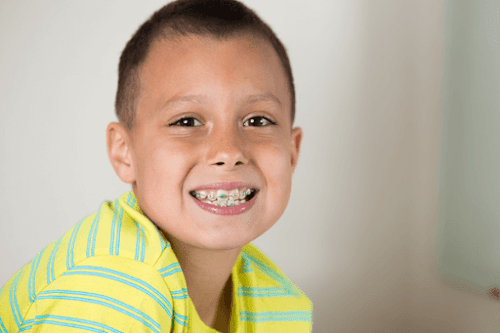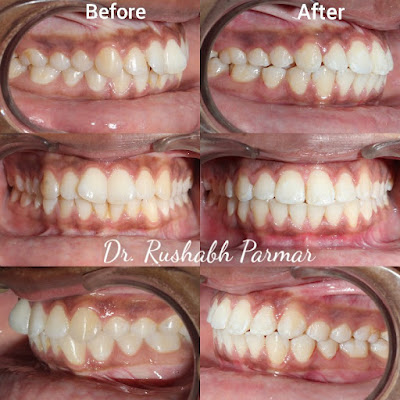What is the right age of Orthodontic Treatment?
- The answer is: it depends!
- There are several factors that should taken into consideration before making a decision to start orthodontic treatment.
- But before we get into that, there are three important things you should know:
1. Permanent teeth start growing around 6 years of age
- The first permanent teeth to grow are the first molars which grow behind the very last milk molar tooth. Central incisors (front teeth) are the first teeth to replace the milk teeth.
2. It takes around 5-6 years to complete the transition from milk teeth to permanent teeth
- Most children get their full set of permanent teeth around age 12-13 years.
3. A child's age is not always an accurate indicator of dental development
- This means that some children develop and grow their teeth quickly while others do not. There are a variety of causes for delayed dental development and in most cases they are not given an importance and concern as long as permanent teeth grow eventually.
- Every child should be seen by an Orthodontist at age 7 years.
An Orthodontic screening and evaluation for all children should be done at age of 7 years or older. This does not necessarily mean that your 7-year old child will always need braces! Orthodontist always recommend a thorough evaluation to rule out certain tooth growth, jaw growth, irregular teeth, and bite problems which may require an early intervention.
Traditionally, treatment with dental braces begins when a child has lost most of his or her milk (primary) teeth, and a majority of the adult (permanent) teeth have grown in - usually between the ages of 8 and 14 years. If treatment is needed during this time, interceptive or preventive treatment is given which will take advantage of your child's growth.
There are specific indications for early orthodontic treatment in growing individuals which is called growth modifications - phase one. After that second phase of fixed braces will be started which is almost always necessary. This second phase is shorter if an early treatment has been done.
The best age for most children to get braces is right before losing their last set of milk teeth.
This varies but is usually between 12-14 years old for most children. Starting treatment too early (too many milk teeth present) may result in longer treatment duration and negative consequences. On the other hand, starting treatment too late can make certain treatment options that depend on jaw growth more difficult and sometimes impossible without orthognathic jaw surgery. The only way to avoid these issues is to see the orthodontist on a regular basis for growth guidance and start treatment at the right time.
Starting orthodontic treatment at the right time minimizes treatment duration and improves treatment results
With proper diagnosis and planning, orthodontic treatment can be easier, more comfortable and shorter in duration.
For adults, the best age for braces is "as soon as possible"!
Adult orthodontics is very important and become familiar because of the increased awareness and more treatment options. The reasons are simple:
- First, unsatisfaction about the appearance of face due to irregular teeth.
- Second, orthodontic problems never get better on their own and almost always get worse with time.
- Third, orthodontic treatment becomes more complex with age including other dental problems and health problems.
The best time for your child to get dental braces depends on the severity and the cause of the misalignment of your child's teeth.
Orthodontic Treatment of three age ranges:
Early Treatment:
Early interceptive treatment, referred to as Phase I is performed before all of the permanent teeth have erupted- often between the ages of 7 and 10 years. It is performed in growing child which is called growth modification. Early evaluation provides better results.
Teenage Treatment:
Teenager typically start full orthodontic treatment between the ages of 12 and 16 years once most of their permanent teeth have erupted. Full orthodontic treatment, referred to as Phase II or fixed braces if they received early treatment. It will position all the permanent teeth in correct position and maximize their appearance, form and function.
Adult Treatment:
- Younger adults (under 35 years, often in their 20’s) who desired, but not received orthodontic treatment during adolescents.
- An older group, typically in their 40’s or 50’s who have other dental problems and need orthodontics as part of larger treatment plan.
The best choice for you and your child will largely depend on the severity of your child's dental problems. Talk with your child's and observe the appearance of teeth. Consult Orthodontist.







.jpg)

Wow what a great blog, i really enjoyed reading this, good luck in your work. Braces Chelsea
ReplyDeleteThank you.
Delete